
views
Preparing for Your Walk Outdoors

Choose a route that includes an incline, uneven terrain, or stairs. The unfortunate truth is that simply walking on level ground is not going to to fully engage your gluteal muscles. If you're walking on a track, in the mall, or somewhere that is completely flat, you will still reap the many benefits of walking, but you won't be working the muscles in your butt enough to really firm it up. Scope out your neighborhood for hilly areas where you might walk. Look at nearby parks and hiking trails, which might be more likely to have a varied landscape. If you live somewhere completely flat, consider walking up and down the stairs in your office building or home several times a week. If that's too boring, look for bridges with staircases where you can walk up and down, stadiums, or buildings or monuments with tons of stairs out front (think of the "Rocky Steps" that Sylvester Stallone runs up in the Rocky movies). Walking up stairs, even at a slow pace, can burn calories two- to three-times faster than walking on a level surface. Even if you're not fully engaging your glutes, one of the benefits of walking regularly can be weight loss. Your backside might start to look better simply from walking and losing weight.
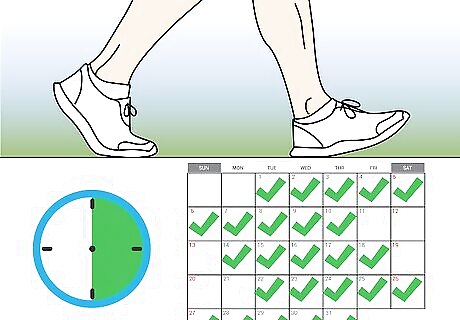
Commit to walking at least 30 minutes a day, five times a week. Results won't be instant, and when you're doing moderate exercise (instead of high-intensity exercise, like running), you'll need to exercise for longer periods of time and more frequently. Try going for a walk during your lunch break at work. You can break up your 30 minutes throughout the day. You can walk for three 10-minute intervals if that makes it easier for you to make walking part of your routine. If you can't get out 5 days a week, at least aim for 3 days.

Find a friend to walk with you. Ask a friend or coworker to join you on your walks. You should be able to carry on a conversation when engaging in moderate-intensity exercise, so you can chat with your workout buddy and keep from getting bored while you exercise. Having a partner to hold you accountable can make it easier for you to stick to your walking regimen. If you're new to the area or can't find anyone else interested in walking, search for a walking club in your area that you can join.
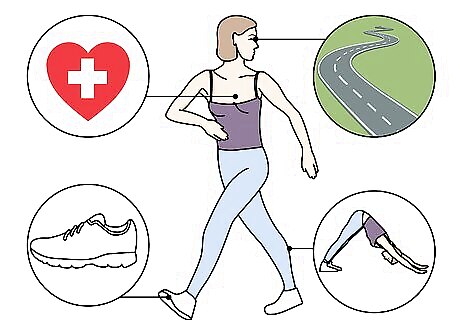
Start slow and stay safe. Staying safe while walking means having shoes that are comfortable and provide adequate support, talking to your doctor about reasonable goals (especially if you haven't exercised in a long time or have health issues), stretching before and after your walk, and staying alert to traffic and other hazards. Don't jump into an intense walking schedule if you haven't exercised in a while. Maybe start out on a level terrain and work your way up to an incline or stairs. Increase your stamina and avoid injury from overuse. Try not to go for walks alone when it's dark out, either late at night or very early in the morning, when you might not be as aware of your surroundings or visible to traffic.
Incorporating Toning Moves into Your Walk
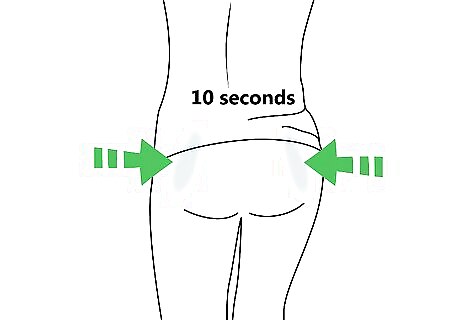
Squeeze your butt cheeks periodically as you walk. Tightening and releasing your butt will get your glutes more engaged in your workout. Try squeezing your butt for several 10-second intervals during your walk. Don't keep your glutes tightened for the entire duration of your walk. Clenching your cheeks for long periods of time can change how you walk and lead to hip and back pain.
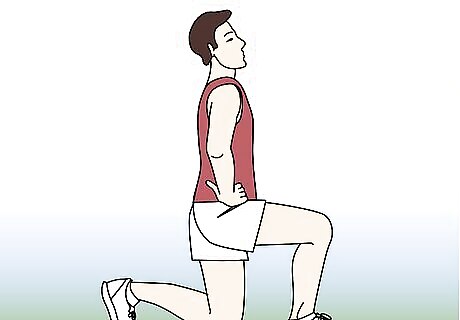
Add a walking lunge to your routine. After walking for five minutes, switch to walking lunges, doing 25 reps per leg. Lunges improve your balance, stretch your muscles, and work your legs and butt. Just make sure you keep proper form so you don't injure your knees or lower back. Begin with your feet hip-distance apart. You can place your hands on your hips for balance, or do whatever feels comfortable. Take one huge step forward, planting your foot firmly in front of you. Lower your body, bending your knees to a 90 degree angle (or 45 degree if you're just starting out). Don't extend your front knee past your toes — your knee should always be right above your foot. Bring your back leg forward and rise again to a standing position. Then repeat the lunge with the opposite leg. EXPERT TIP Laila Ajani Laila Ajani Fitness Trainer Laila Ajani is a Fitness Trainer and founder of Push Personal Fitness, a personal training organization based in the San Francisco Bay Area. With over 10 years as a trainer and exercise specialist, Laila has expertise in competitive athletics (gymnastics, powerlifting, and tennis), personal training, distance running, and Olympic lifting. Laila is certified by the National Strength & Conditioning Association (NSCA), USA Powerlifting (USAPL), and she is a Corrective Exercise Specialist (CES). Laila Ajani Laila Ajani Fitness Trainer Use proper form when doing walking lunges. Walking lunges are a great exercise to build leg and abdominal muscles. It's one of the best lunge variations, involving complex motion that works your muscles. Lean forward while performing them to engage your abs properly, or else the exercise will only target your legs. The more parallel you are to the ground, the harder your abs have to work. Try incorporating hand weights or dumbbells to increase your arms, legs, and core strength.

Incorporate squats into your walk. Squats are considered one of the best, most effective workouts for a shapely rear. You should practice them at home to get comfortable and master the correct form before trying a walking squat. You want to make sure you sink your hips, keep your back straight, and stick your butt out behind you so you don't injure your knees. Start with your feet together. Step out to the side with your dominant foot (you will be moving laterally, so if you are walking down a path you may want to turn to the side, leading with your dominant foot). Slowly lower your hips, making sure your knees don't extend past your toes. Rise back into a standing position, bringing your nondominant foot in next to your dominant foot. Do 12 reps. Your squats will carry you sideways, with your dominant foot leading. Make sure you perform the exercise on both sides, alternating leading with your dominant and nondominant foot.
Walking on a Treadmill
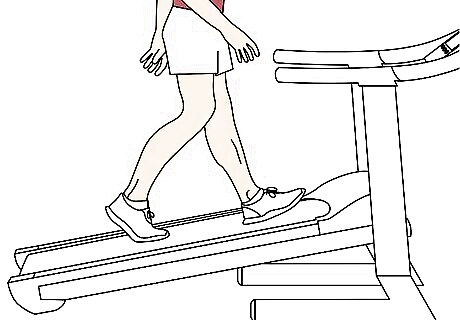
Set the treadmill on an incline. Striding uphill, against the force of gravity, will force your legs and butt to work harder. Walking on an incline can also be easier on your knees. After warming up, increase the incline on the treadmill every few minutes until you reach a 10% incline. Your legs, butt, and lungs should feel challenged, but not exhausted. If you are unable to talk, lower the incline. If you have enough breath to sing, raise the incline higher.
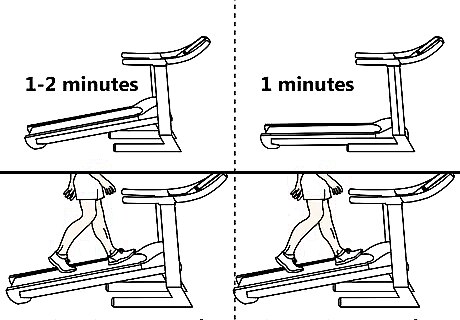
Try interval training to burn more calories without reducing muscle mass. Steady cardio can actually lead to muscle loss, which is not what you want when you're trying to tone and shape your butt. Interval training means you alternate between periods of sprinting and walking, but it can be adapted for just walking, too. Try applying intervals to inclines. Set the incline to 8% and hold on to the handles, digging your heels into the treadmill and lifting your knees. It should feel like you're dragging yourself through the mud. After one or two minutes, go back to a 1% incline and rest for a minute. To practice intervals without sprints, walk at a slow pace for 90 seconds. Then increase the speed to a quick walk, but not a run or jog, and do that for 30-60 seconds. Then go back to your slower pace for another 90 seconds, and so on.
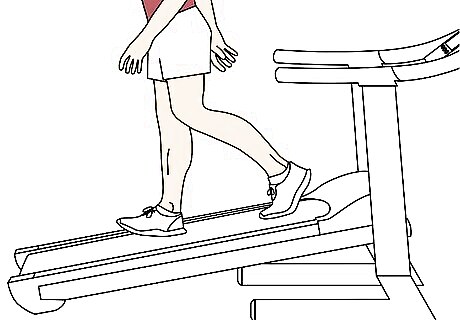
Walk backwards on the treadmill to engage your glutes. Pay close attention to what you're doing so you don't fall and walk at a slower pace than you're used to. Walking backwards expends more calories and makes your glutes and hamstrings work harder than walking forwards. Because walking backwards on a treadmill is risky, make sure you are not overtired when you try it. Start with the treadmill on the slowest setting, then increase speed slowly once you feel comfortable. Set your treadmill on an incline for an additional challenge, or alternate between walking forwards and backwards to keep your workout interesting.


















Comments
0 comment